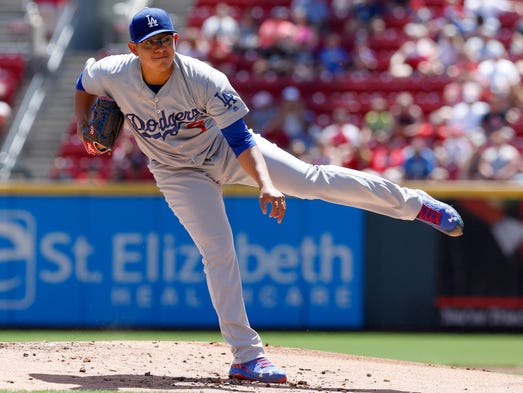Doc: Don’t bother trying to predict baseball – Cincinnati.com
A baseball season is a million miles on a crooked road. From April to October, it twists like a dreadlock. Everything you think you know, you don’t.
The Reds lost 4-0 Sunday, to the same L.A. Dodgers they’d pounded the previous two nights by a combined 20-3. The Reds are 21-13 since the All-Star break, second-best in the National League, after they were 29-52 in their first 81 games.
The gloom of April, May and June has lifted, for now. September awaits and, maybe, doom. Baseball defies prediction and knee-jerk reaction. Unless your team is really good (Cubs) or really bad (Braves), there simply is no projecting.
That’s why yelling for a manager to be fired in May is uneducated spleen-cleaning. That’s why asking for current ownership to sell the team has all the intelligence of a lug nut. Go to other sports for snap judgments. Baseball doesn’t work that way.
The only question now is, which Reds were more representative? The Reds who made you look away before the break, or the Reds that have you thinking ’17 might be OK?
Don’t even try to answer. Baseball isn’t for figuring out.
Here is what has happened, or at least what Bryan Price says has happened:
His veterans hung in there. At their lowest lows (and there have been more than a few), they could have packed it in. Instead, Votto, Phillips, Bruce, Cozart et al kept playing. “There’s a DNA among this group that has never conceded that we had to have a long, miserable, lethargic season,’’ Price said. “There’s a nice expectation that we have the ability to play better than the record suggests.’’
Give Price credit for being the custodian of that optimism, publicly smiling while privately wondering if he’d ever get enough pitchers healthy to make a decent starting rotation and a bullpen that didn’t explode on contact.
Managers set tones. It might be their most important job.
“The credit should go to the players,’’ the manager said. Price says crediting Price would be presumptuous. “I’ve been here three years and this is as good a clubhouse as we’ve had. The previous two years weren’t that good. I was here then, too.’’
In April and May, he tried to make the case that his team was better than its record. It was a tough sell. The Reds were 17-35 at the end of May. They were losing two of every three. At one point, they owned the unholy trifecta: Last in the league in hitting, pitching and fielding. “But we didn’t play into the woe is me stuff,’’ said Price. “This is what we have. We’re going to help guys get better and stay optimistic.’’
They did and they have. There are obvious, statistical reasons. Joey Votto has the “S” back on his chest. Man’s batting .451 since the break. His on-base is .552. Ridiculous numbers, even for Votto.
Billy Hamilton is blooming as a major-league hitter, right before our eyes.
Anthony DeSclafani returned, then Homer Bailey. Raisel Iglesias and Michael Lorenzen have sprinted to the bullpen, bearing hoses. Hindsight being what it is, it’s a wonder we thought the Reds should have been better those first three months. They’ve used 28 pitchers, most before the All-Star break. Box seats if you can remember half of ‘em:
Daniel Wright.
Layne Somsen.
Steve Delabar, J. C. Ramirez, A.J. Morris, Dayan Diaz.
C’mon.
The bullpen was so bad, Price couldn’t even establish roles. Unless you think Seventh-Inning, Blows-A-Three-Run-Lead Guy is a role.
Nothing makes a manager look smarter (or dumber) than his bullpen.
On Sunday, DeSclafani threw seven professional innings. It wasn’t his best day, but it could have been worse. “He’s not going to fall apart,’’ Price said. “He’s not going to self-inflict, walk a bunch of guys, fall behind constantly’’ in the count. “He’s not going to make a bunch of mistakes.’’
He’s going to pitch like a grown up.
The Reds need more DeSclafanis, young, talented players growing into their major-league skins. They might get them, in which case runs like the one they’re on now will become more frequent. They might not. In which case the reboot could seem endless.
We wouldn’t have applauded the Reds progress during the season’s first three and a half months. We applaud now. The next month and change? I have no idea. If you think you do, you don’t know baseball.
In baseball, you don’t know nothin’.















